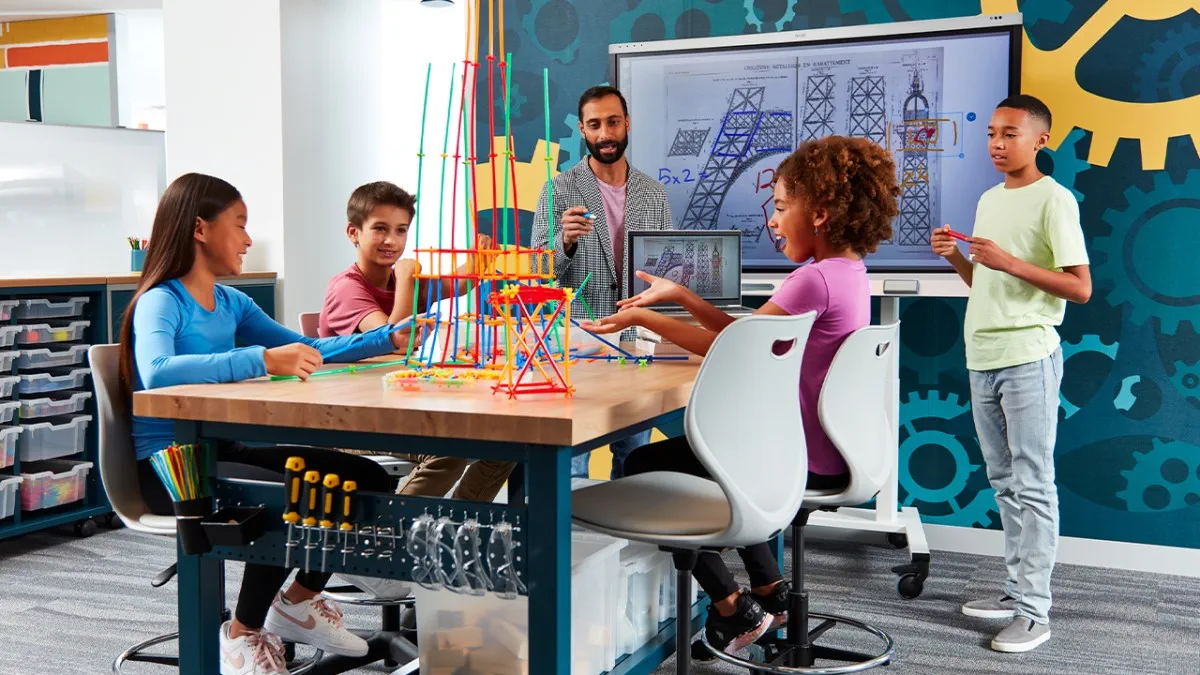Interactive exhibits are a good way to engage children in learning. They can aid your school in showing prospective students the experience of attending the school they attend. They can also create excitement for the offerings of your school when prospective students decide to see it in person. Most importantly, interactive exhibits can be great ways to inspire students to be curious.
Some schools use old textbooks to get students excited about learning. interactive displays in schools. could also be utilized. But you don’t have to shell out an enormous amount of dollars or invest a lot of money to inspire kids to enjoy learning through interactive displays in your school. Instead, consider ways to innovative and cheaply design interactive displays that make kids more excited about learning in your school for less than you imagine.
Table of Contents
How can interactive displays assist children in their learning?
Interactive displays can aid kids in learning:
- Inspiring students to be active in their learning.
- Instructing students to explore each topic in greater depth than they would with the standard textbook.
- Students are taught the connections between subjects. Engaging children through activities and games.
In a time where children are becoming more tech-savvy with everything available to them, it’s not a reason to be surprised that these displays have become increasingly common in classrooms. They can come in a variety of shapes, ranging from huge touchscreens to interactive whiteboards. They can provide many benefits to teachers as well as students.
Furthermore, interactive displays provide children with an engaging and immersive learning experience. They can grab the attention of children and make lessons more interesting. In addition, these displays could be utilized to stimulate cooperation and interactivity among students.
Additionally, interactive displays may aid children who have diverse learning styles. For instance, visual students might benefit from being able to see videos and images displayed. Conversely, kinesthetic learners may be more interested in being able to make use of their hands to interact with the material. Through offering a variety of ways for children to interact with the content, interactive displays could assist more children to succeed in school.
What are some of the characteristics of interactive displays that make them perfect for children?
Interactive displays are excellent for kids as they’re hands-on and interactive. They can also make the learning process more fun. Interactive displays also offer the opportunity for students to collaborate to see what they’re learning in real everyday life. For instance, if you’re conducting a math class, the interactive display might create a domino effect in which students are attempting to knock down the dominoes prior to them sinking into the sand.
Another reason that makes these interactive exhibits great for children is the fact that they can be customized to your requirements. You can alter the layout and design new activities or lessons as required. This helps keep your school fresh and exciting by using new interactive exhibits.
What are the best ways to use interactivity to build a fun educational environment for children?
If you use interactive displays, your children can be taught various things they would not be able to comprehend by themselves. For instance, they could learn about the different regions of the globe through a map and also discover more about animals and plants by studying images of them.
Furthermore, interactive exhibits could assist children in understanding the things your school has to provide. Kids are always learning and being involved in technology and technology, so it is important to make the most of it by having interactive displays at your school.
What are the best ideas for incorporating interactive displays into your classroom?
One of the most effective ways to utilize interactive displays in classrooms within the class includes:
- Make use of interactive displays in conjunction with your current curriculum. The most popular way to utilize interactive displays is in the classroom. If, for instance, you’re teaching a class on graphs, you can place the graph interactively on the wall and let children play around with it. This can make them more involved in the subject they’re learning as well as assist them in acquiring faster.
- Make a different option for children who do not want to study in school. The most effective way to accomplish this is to create something that your students will enjoy performing at their homes or in the evenings, which is related to the subject they were taught in school. For instance, if you are teaching a class on graphs, it is possible to include an interactive graph that gives your students tips on graphing on their own in the future.
- Demonstrate how math can apply to real life! One method to demonstrate this is to have children make “real-life” math problems from situations in their lives. It’ll make them think in a creative and critical manner about math, so they can tackle math problems successfully after they leave school.
What interactive displays can be used to aid various learning styles?
Certain students learn best through listening, whereas other students prefer watching. By using interactive exhibits, you can make sure that your students receive the education they require at school. Interactive displays, for instance, will make learning more fun for those who are auditory or who are visual learners. Additionally, it’s an ideal way to help support diverse learning styles and interests so that kids benefit from their schooling experience.
What are the advantages of making use of interactive displays in the classroom?
The best method to inspire youngsters to learn is by using interactive exhibits. The more they interact with the material and learn from it, the more they will retain the information and apply it in their life. Furthermore, these displays could assist children in gaining a greater knowledge about what it’s really like to be in your school and how much effort is required to learn each day.
Another advantage of using Interactive displays for classrooms is that they encourage students to write notes on the displays. It helps them retain the lessons you gave them about the material and concepts presented in these displays to be able to refer back later.
Conclusion
Interactive exhibits are a fantastic method of getting kids excited about learning, and also of drawing more students. They can also help the school show the benefits it can offer prospective students by offering an interactive exhibit that gives students a glimpse of what it’s like to go to the school of their choice.

